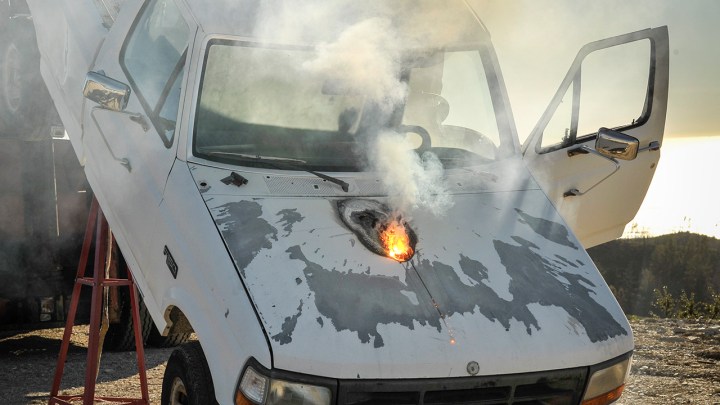
If you’re not familiar with the ATHENA system, all you really need to know is that Lockheed has been working on it for the past few years, and demonstrated its power a few months ago by disabling a truck with it. This feat was accomplished by firing a sustained 30 kilowatt burst at the vehicle’s hood, and burning a hole through the engine block. It’s ridiculously powerful — but power alone isn’t its most revolutionary feature.
The thing that makes ATHENA special is the fact that it’s built using modular techniques. The weapon combines multiple fiber modules to generate an intense laser beam. According to Lockheed, this layered approach “reduces the chance for mission disruption as a result of a component failure and minimizes the need for frequent maintenance or repair.”
In addition to being far more reliable, ATHENA’s modular design also allows operators to add or subtract laser modules to increase or decrease power as needed. The base model is capable of firing a 60kW beam, but with off-the-shelf commercial fiber laser components, the modules can be linked together to produce lasers of up to 120 kW if the situation calls for it. If you’re having trouble wrapping your head around how powerful that is, just take a look at what this 6W beam is capable of, and keep in mind that ATHENA is roughly 20,000 times as strong.
In the near term, Lockheed expects its lasers to “provide a complement to traditional kinetic weapons in the battlefield,” but their potential future applications are far more dramatic. Moving forward, the company says that ATHENA lasers will help protect soldiers from threats such as “swarms of drones” or “large numbers of rockets and mortars.”




